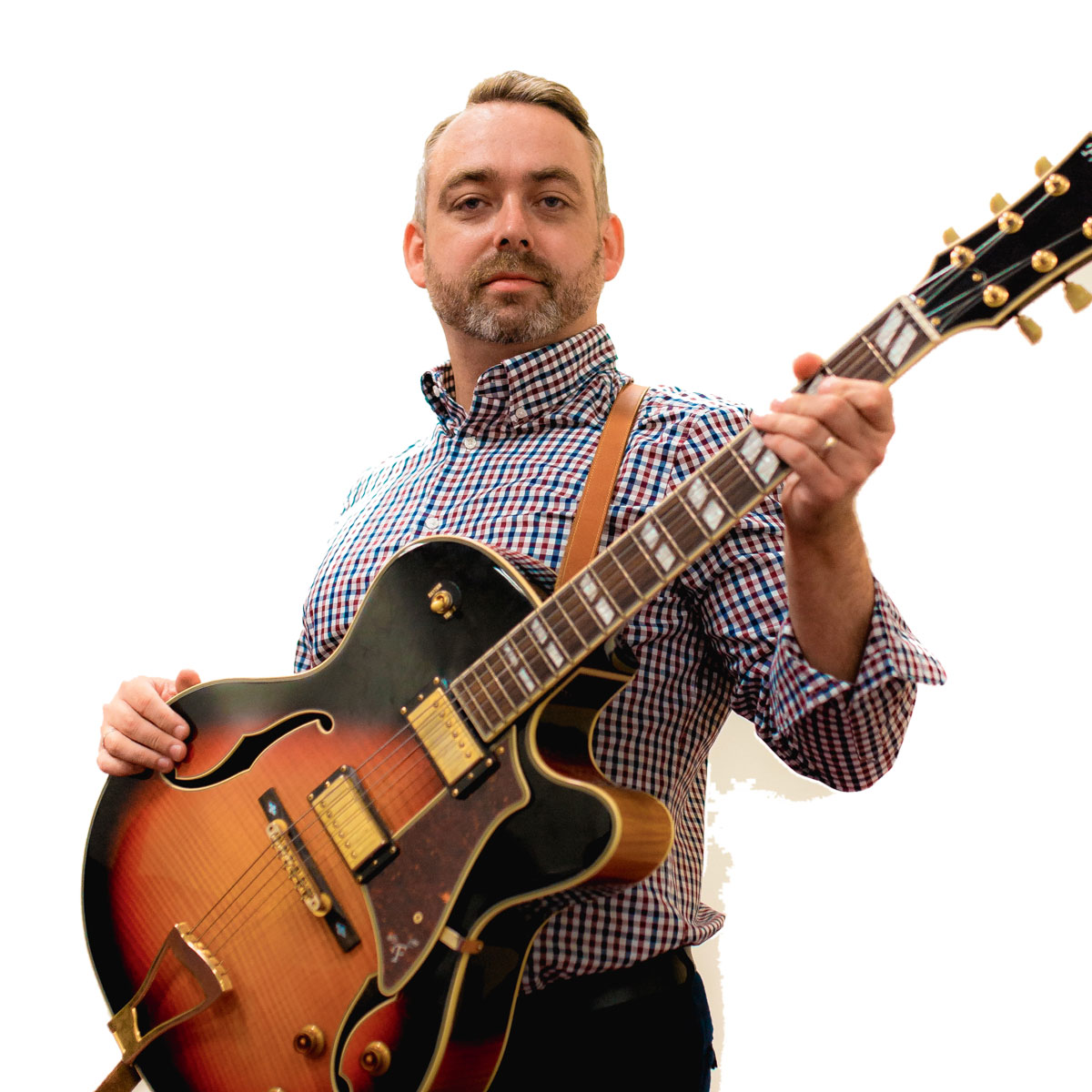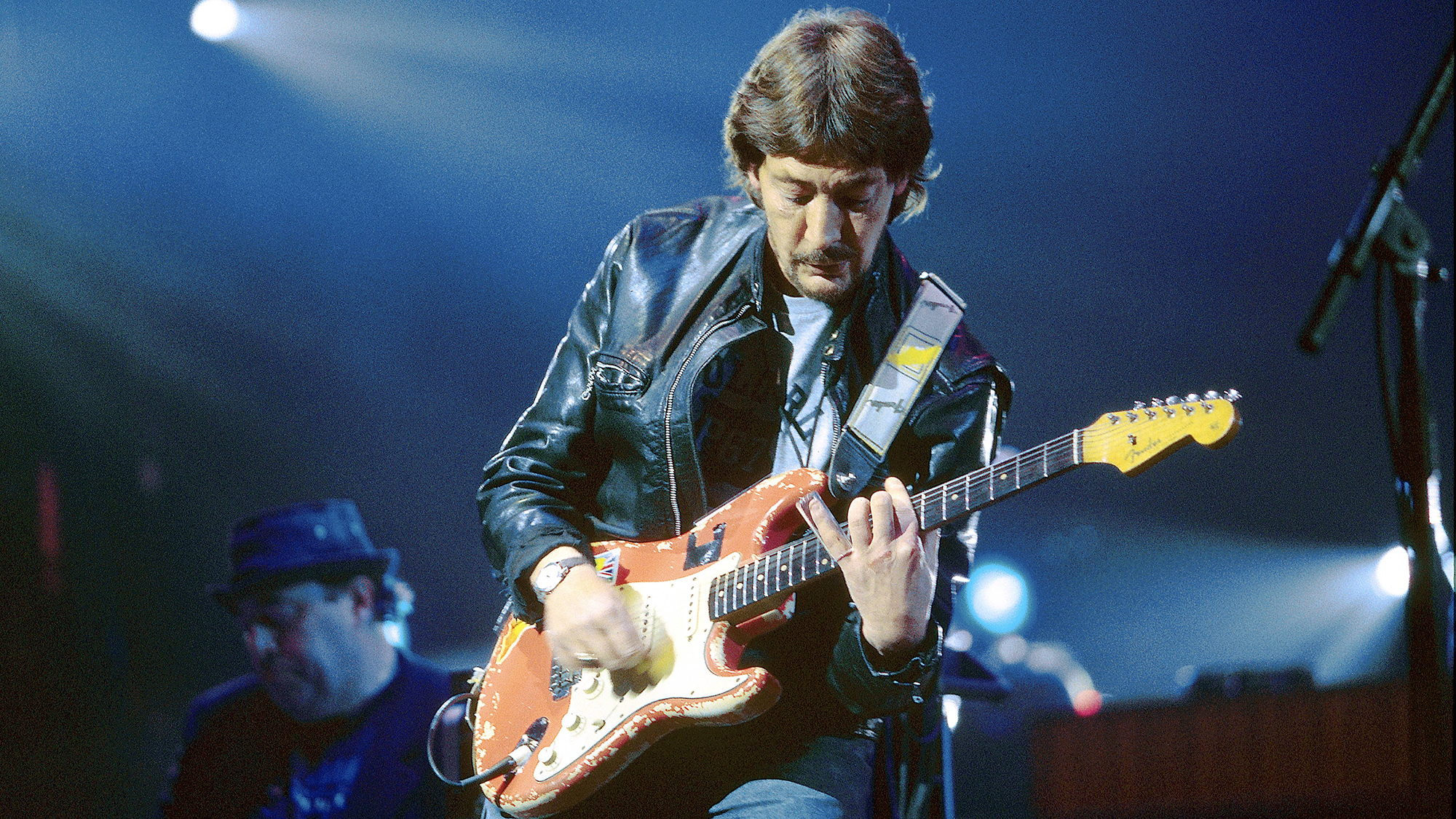Want to be a good rhythm guitarist? You need to know your 7th chords – and the CAGED system can help you find them all over the neck
It's time to throw some shapes on the fretboard, navigating using the CAGED system, and deploying chord choices that makes players like John Frusciante such great rhythm players

The fretboard can be a complicated terrain to navigate. Many notes can be played at the same pitch in multiple positions, and the third and second strings are tuned a major 3rd apart, whereas the rest are tuned to the interval of a 4th.
With this in mind, the CAGED system is a useful tool to help the fretboard make a little more sense. This system is based on any chord being able to be played in five different positions, based upon the five main open-position major chord shapes of C-A-G-E-D. In essence, each one of these chords can be moved up the guitar neck, most commonly utilising the first finger to barre across the fretboard.
Most guitarists are familiar with the E and A shape barre chords that are commonplace in blues, pop and rock. Full barres using the C and G shapes are a little less popular in contemporary music, but are prevalent in classical guitar. These shapes can be trickier play, but they do have something different compared to the E and A shapes.
This is that they allow for the notes of chords and arpeggios to be played in sequence. Take the open C major chord. The intervals in ascending order from the fifth string up to the first are: root, major 3rd, 5th, octave and 10th (essentially another major 3rd stacked an octave higher).
This shape, along with the open G chord, are therefore constructed in a logical fashion, whereas the open E and A shapes are rather more disorganised – although this makes them perfect for powerchords, for example.
Our final shape is the D shape, based upon the open D chord. This utilises the top four strings and is great for funk rhythm playing and cutting arpeggios. All the CAGED system shapes provide enough variation to navigate a variety of genres and styles.
Becoming proficient in them will make you a well-versed guitarist and breathe life into your playing, especially if your go-to barre chords are those ubiquitous but super guitar-friendly E and A shapes.
All the latest guitar news, interviews, lessons, reviews, deals and more, direct to your inbox!
When learning these shapes, it’s helpful to visualise the open chord shape within each barre chord. You may also notice when playing the C, A, G and E shapes, that your fretting hand’s first finger is working as a handy (sic) moveable guitar capo.
Of course, sometimes an actual capo will be the preferred method, allowing you to play open chord shapes further up the neck, as a guitarist like James Taylor does. But even with no barre or capo, it’s beneficial to know the CAGED shapes all over the fretboard.
The following examples show how major 7th, minor 7th, dominant 7th, and minor 7b5 chords can be played using the CAGED system, while the study piece explores a four-bar chord progression showing variety of ways of playing each chord.
Get the tone
Amp Settings: Gain 4, Bass 7, Middle 6, Treble 7, Reverb 4
Your neck pickup is always a good choice for this style of playing, as it provides a ‘plummy’ tone that makes the examples sound warm and pleasant. A cleanish guitar amp and a little reverb will also help.
It goes without saying that heavy distortion and wild effects are off the agenda, but experimenting with your electric guitar’s tone control can often refine the results.
Examples
Exercise 1. Major 7 shapes
Our first example features five shapes of a C major 7 chord using the CAGED system in logical order. You may notice that the sixth string is omitted from the G-shape chord at the start of the second bar. This is to make the shape a little easier to play.
Exercise 2. Minor 7 shapes
This example showcases four D minor 7 shapes, and demonstrates how arpeggiated chords can be used to create an entirely different feel.
Exercise 3. Dominant 7 shapes
Five G7 chord shapes are used here to create a colourful funk rhythm guitar part. Moving shapes up the neck as seen in these examples is good for creating interesting rhythm guitar parts with upper melodic movement, especially when working with other instruments.
Exercise 4. Minor 7 flat 5 shapes
Five Bm7b5 chords feature in this example, with lots of arpeggios to create a neo-soul style guitar part. Arpeggios can be unforgiving if there are any notes that aren’t fretted properly, or if stray open strings creep in, so make sure that you have every chord shape accurately under your fingers.
Exercise 5. Caged system in action
This final example shows how we might put some of these shapes together when navigating a simple chord progression. The CAGED system is exploited fully here so that each chord climbs the guitar neck, with A shape chords featuring the most.
Study Piece
[Bars 1-8] We set the scene with a four-bar progression using open position chords. This progression is used throughout, with the CAGED system exploring different shapes and voicings.
[Bars 9-12] features barre chords with added single-note lines for melodic interest before a repetitive rhythm pattern in bars 13-16 takes the chords further up the neck
[Bars 17-20] continue to explore different chord voicings with some neo-soul inspired arpeggios during the final two bars before we come to a close in bars 21-24 with further neo-soul flourishes, ending with a final climb using five shapes of C major 7.
Simon is a graduate of the UK's Academy of Contemporary Music and The Guitar Institute, and holds a Masters degree in music. He teaches, examines and plays everything from rock to jazz.
![Red Hot Chili Peppers - Snow [Hey Oh] [Video] - YouTube](https://img.youtube.com/vi/p0vM9iINl28/maxresdefault.jpg)

